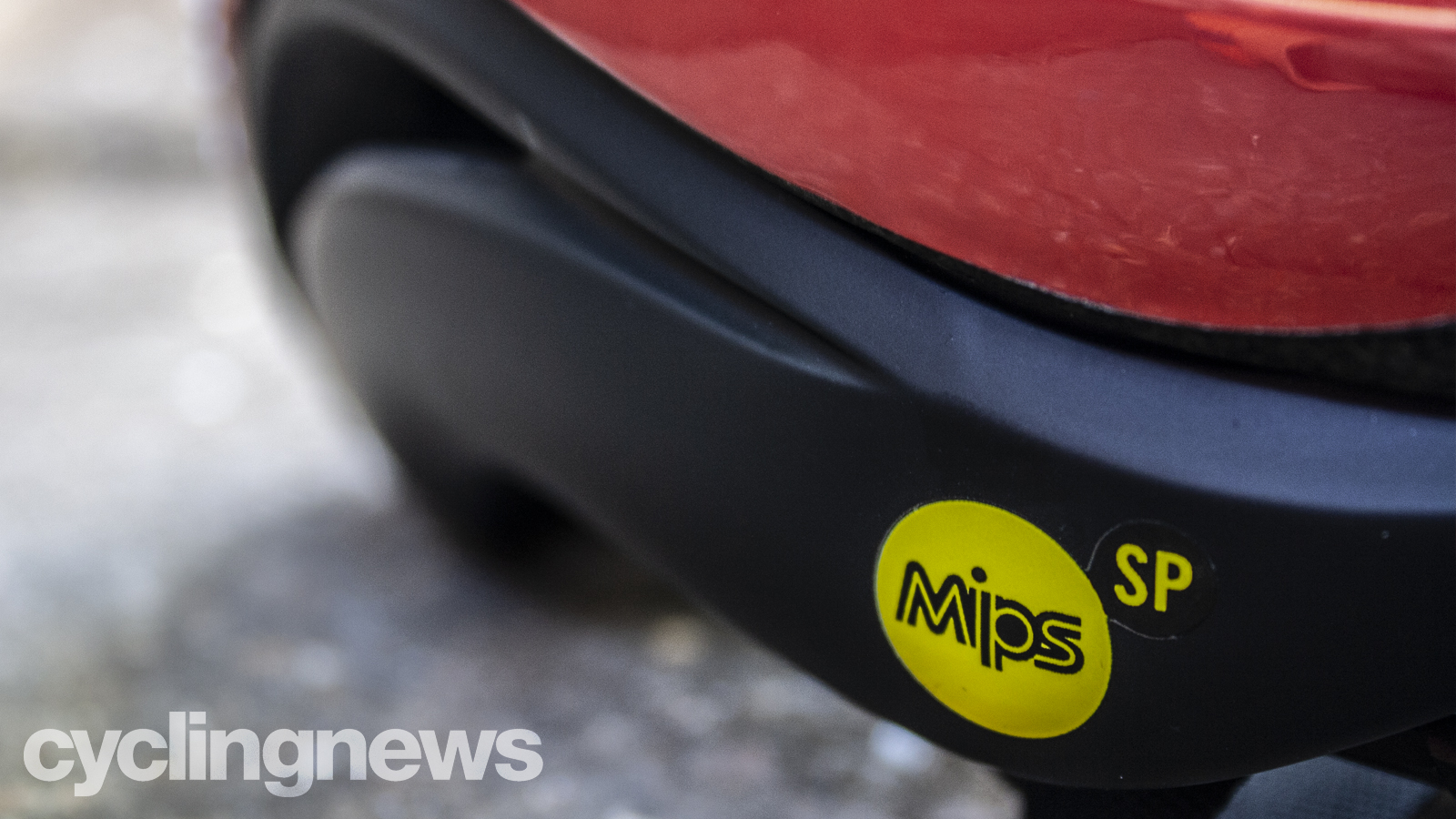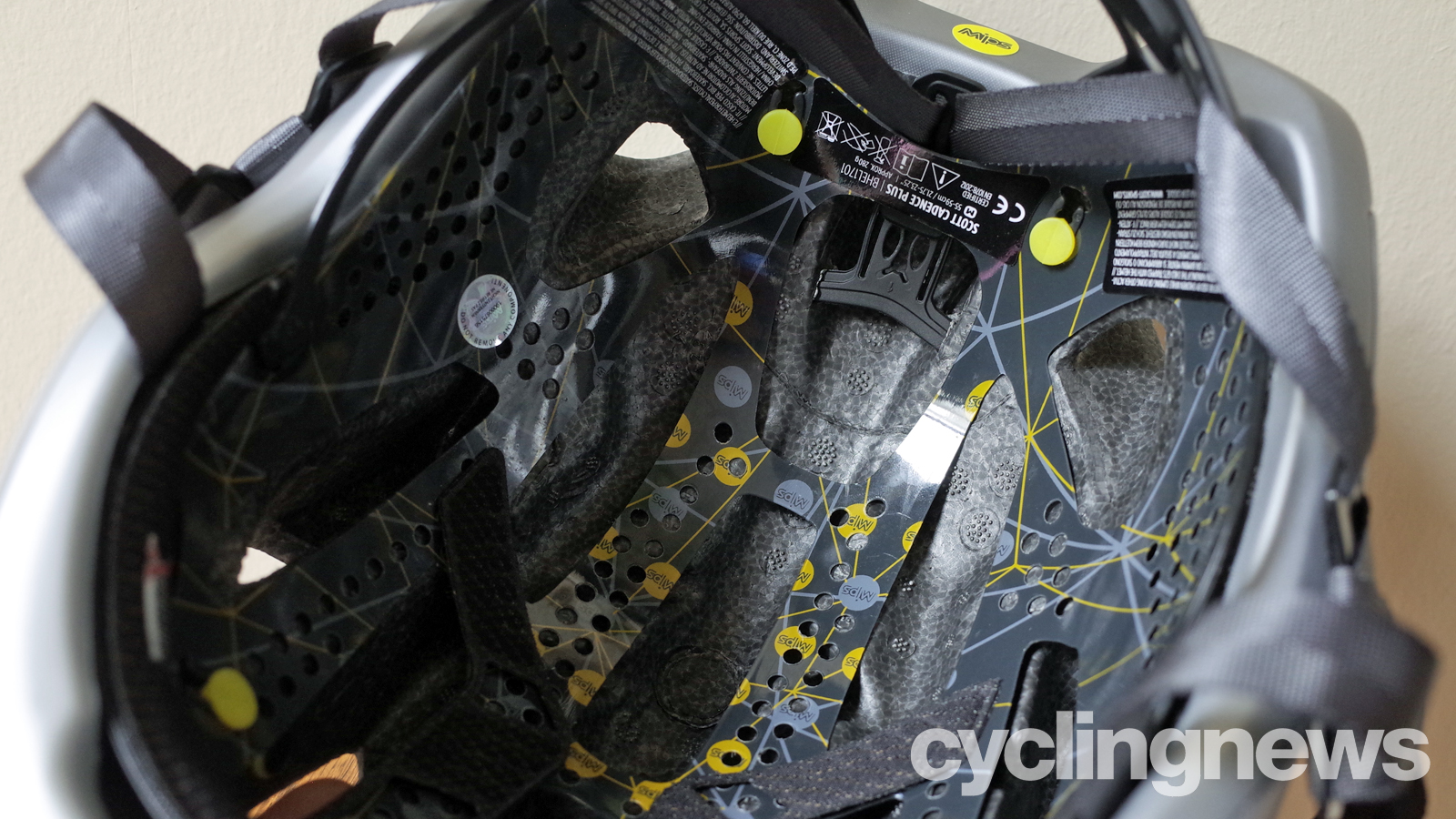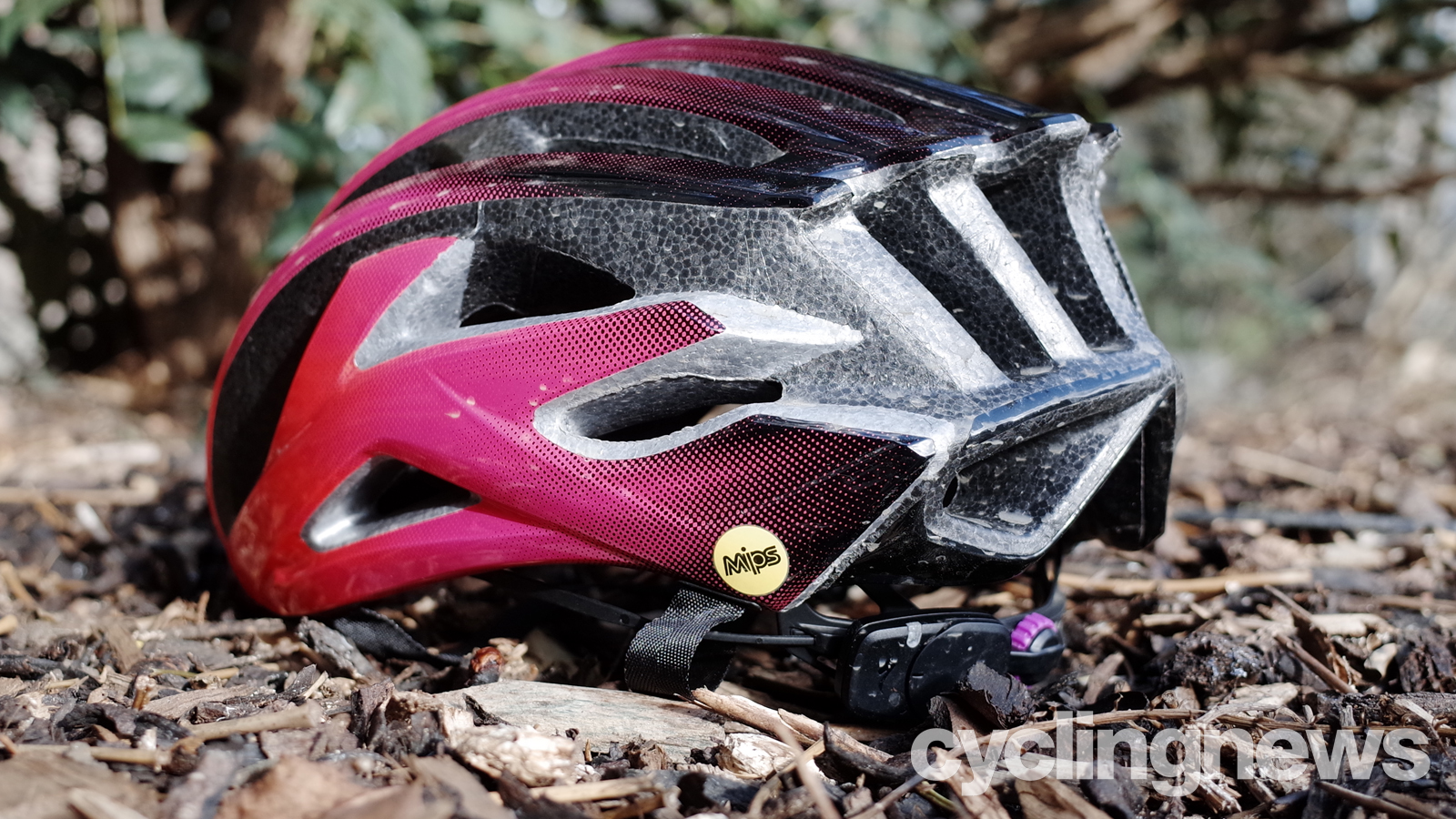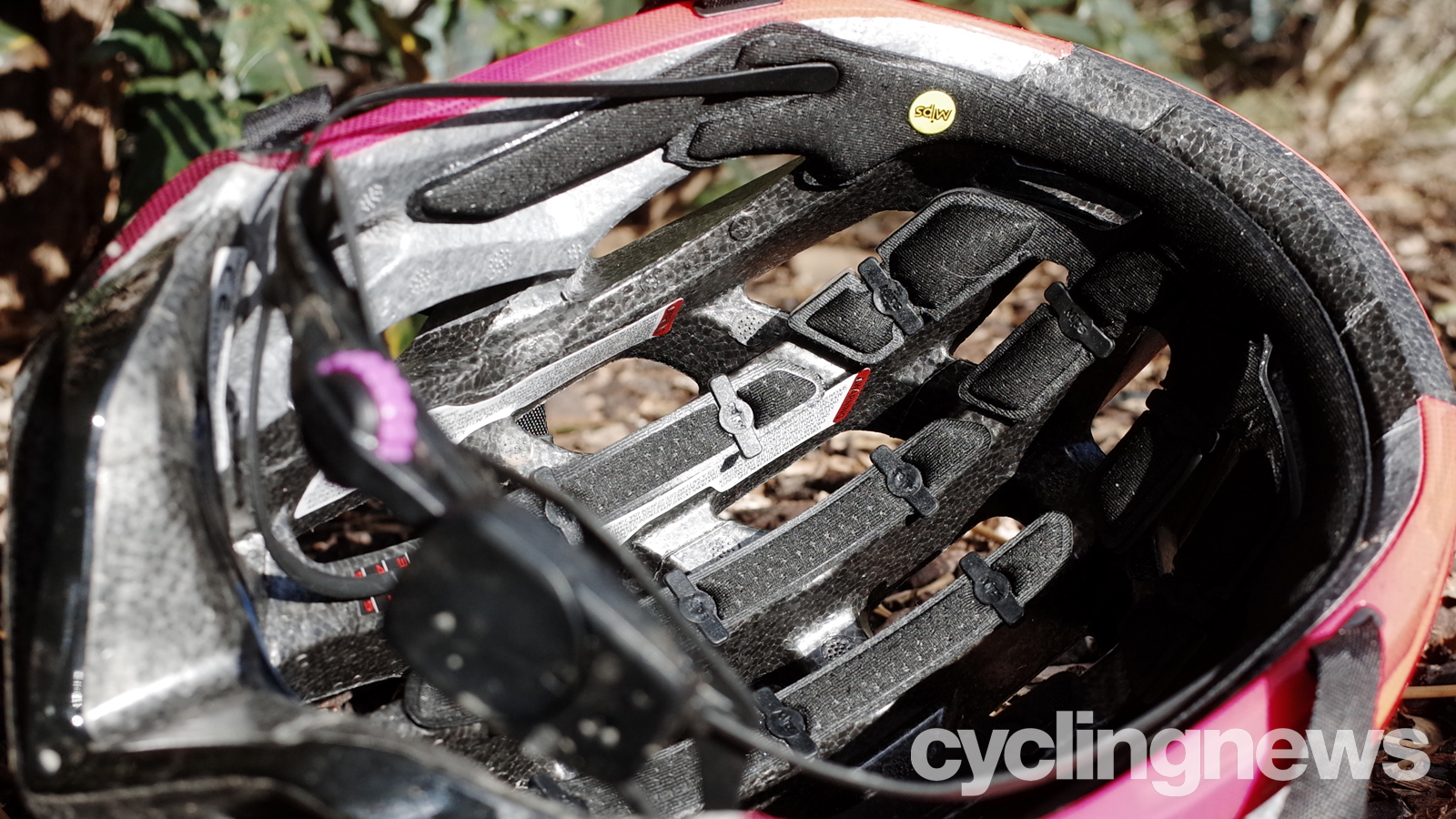What is a MIPS helmet? Often touted as safer, what does MIPS mean and how does it work?
Everything you need to know about the thin layer of plastic that could save your life

If you've bought a helmet in the past few years, you'll have undoubtedly come across the terms MIPS, and naturally, headed straight to Google to ask what is a MIPS helmet?
This four-letter acronym has become a buzzword among the cycling helmet market, and it has become almost synonymous with increased safety. However, while all brands are happy to shout about its inclusion, not many of them explain what it means.
Luckily, that's where we come in. In this article, we're going to explain what MIPS is, before delving into what that means for you, no matter whether you're shopping for the best road bike helmets, the best aero helmets, or the best helmet for commuting.
MIPS stands for Multi-directional Impact Protection System and, in this article, we will dive into the science behind it, why it has become so popular among the cycling community, why so many helmets feature it, and debate the pros and cons of MIPS helmets.
Origin of MIPS technology
Swedish neurosurgeon, Hans von Holst, is said to be the father of MIPS technology. Alongside Peter Halldin, a researcher at the Swedish Royal Institute of Technology, and Svein Kleiven who helped pioneer the finite element (FE) model of the human brain to assess head injuries, von Holst discovered that human brains are much better at handling linear (straight-on) impacts than oblique ones which create rotational strain. In sports such as cycling, skiing and horseback riding – where helmets are widely used – the pair found that most impacts created rotational forces on the brain, leading to sometimes severe injuries, even when the athlete was wearing a helmet.
MIPS continues to use the FE model to simulate helmeted head impacts and evaluate the risk of different types of head injuries. The FE model is also used in car crash analysis and sports studies such as in the NFL.
Through years of research and testing, von Holst and Halldin discovered that by putting two low friction layers inside a helmet, they could create relative motion between the helmet and head that could reduce rotational injuries on the brain.
Get The Leadout Newsletter
The latest race content, interviews, features, reviews and expert buying guides, direct to your inbox!

How does a MIPS helmet work?
MIPS is made up of a thin layer of material incorporated into the inside of a helmet, commonly referred to as a slip plane, or a slip liner. It is independent of the helmet shell, but it is anchored at a few key points. Its design allows it to move independently of the helmet in all directions (hence multi-directional), and this in turn allows the helmet to rotate independently from the head. The result is an absorption of energy when crashing, which reduces rotational motion of the head itself, and thus the brain.
In more basic terms, MIPS technology allows the helmet to move around your head during a crash, meaning less force is transferred to the brain within. Of course, it doesn’t move freely, or there would be no point in wearing the helmet at all. The anchor points are designed to allow for about 10-15mm of rotational movement.
Therefore theoretically, a MIPS helmet lessens the chance for brain injury, but does that actually ring true in practice?
Now that we've answered the question of 'what is a MIPS helmet', the next step is to work out what that means for you, and whether MIPS helmets are actually safer?
The 'safer' helmet debate
The list of helmet brands that have partnered with MIPS is almost endless – the MIPS website shows 121 brands that use its safety system, and its use spans every corner of the cycling segment. MIPS helmets will be found in almost all of our buying guides, from the best gravel bike helmets right through to the best time trial helmets.
With so much traction in the industry, surely it can’t be all fluff, right?
Here’s where it gets complicated: helmet safety is difficult to test. You can’t give people a prototype helmet, ask them to crash while wearing it, and report the findings. Plus, every crash is different. Every impact between helmet and ground is unique – the road surface, the type and magnitude of force, and the rider’s unique anatomical attributes could all influence the severity of the resulting injury.
However, MIPS thoroughly tests its technology in all sorts of accident scenarios, and has come up with a few key statistics that separate its own technology from non-MIPS helmets.
From these tests, MIPS claims that a MIPS-equipped helmet is at least 10 per cent better at handling rotational impact than the same helmet without MIPS. In fact, 10 per cent is the manufacturing baseline for a MIPS helmet, and any that are less than 10 per cent better aren't allowed to be branded as MIPS, even if it features the brand's liner inside.
In reality, most helmets see a 20-70 per cent improvement with MIPS technology, so the 10 per cent threshold is really an absolute minimum of improvement.
However, when it comes to choosing which helmet to buy, we need more information. MIPS won’t specify which brands or helmets are better at handling rotational impacts. All we know for certain is that a MIPS-equipped helmet is at least 10 per cent better at handling rotational forces than the same helmet without MIPS. Therefore, if there's a choice, go for MIPS.
But wait, aren't all cycling helmets safe?
All cycling helmets must pass a series of standardised tests before being released to consumers. These include high-velocity impacts, drops on flat, jagged, or curved surfaces, and more. Therefore, assuming you are buying from a reputable brand and retailer, you can be sure that all helmets - with or without MIPS - have passed this test.
But in these tests, besides the simple pass/fail result, there is no sliding scale to help us see which helmets passed with flying colours, and which simply scraped through. Thankfully, marketing departments have finally learned that helmet safety is an important selling metric, so manufacturers are sending their helmets to independent testers such as Virginia Tech, who are able to put all helmets through a series of tests in order to rate and rank the safety performance of helmets.
MIPS has its own testing standards for helmets, which must pass the ECE 22.05, DOT FMVSS 218, and Snell M2015 standardised tests, and fulfil the standard for its target market, whether it be cycling or skiing. There are also 10 different "concept" designs by MIPS, which are marginally different iterations of the MIPS system meant to fit in different helmets. The MIPS Integra is designed for POC helmets and mountain biking, for example, while MIPS Spherical is a highly-integrated design present in many Bell and Giro helmets. As MIPS says, "every helmet is unique," and so it designs its safety system accordingly.
Does every brand sell MIPS helmets?
Not all helmet manufacturers are partners with MIPS. Kask for one does not make a MIPS-equipped helmet at all. We’ll spare you the word soup of Kask’s official statement, and summarise it to say that Kask tests all of its helmets vigorously using 'KASK WG11 rotational impact testing' process, and that it successfully passes the international standardised tests which measure the rotational energy created by oblique impacts.
Interestingly, with the Nytron aero helmet, Rudy Project has also recently adopted the WG11 protocol too, which is named in relation to the CEN\TC 158\Working Group 11, a group of experts with a helmet testing method and protocol developed by the CEN (European Committee for Standardisation).

Pros of MIPS helmets
This section will be kept reasonably short, since there's just one obvious pro to MIPS-equipped helmets: a claimed - and potentially guaranteed - increase in safety.
We say 'potentially guaranteed' for reasons explained above. If you're comparing two like-for-like helmets and the only difference is the MIPS liner, then according to MIPS, you're getting a minimum increase in impact protection of 10 per cent.
Cons of MIPS helmets
As for the downsides, MIPS helmets are generally more expensive, but since we can’t always compare the “safeness” of helmets directly, there’s no way to tell what we’re actually paying extra for. Sure, we’re paying for the technology and the promise that this MIPS-equipped version is better at handling rotational impact than its non-MIPS cousin, but that’s about it.
Before the MIPS SL was introduced, MIPS-equipped helmets were less breathable too, since many of the vents were blocked - partially - by the slip plane. MIPS SL is a much lighter-touch iteration, which leaves vents free to do what they're supposed to, but be aware of this if buying an older-model helmet.
It is also important to note that MIPS-equipped helmets can occasionally also fit differently. They can be tighter and smaller because of the extra plastic slip-plane layer between the helmet’s shell and its pads. Many helmet manufacturers are accommodating for the MIPS size difference, but if you’re considering making the switch to a MIPS-equipped helmet, we recommend trying it on for size first.

Should I get a MIPS helmet?
The bottom line is this: modern-day helmets – MIPS-equipped or not – are rigorously tested and have made it through a gauntlet of high-impact, high-velocity crash testing and onto the consumer market.
While we can’t always define if a helmet is “safer,” we can say that a helmet is a lot better at protecting your brain than nothing. A helmet can save your life, regardless of if it has MIPS or not.
Zach is a freelance writer, the head of ZNehr Coaching, and an elite-level rider in road, track, and e-racing. He writes about everything cycling-related, from buyer's guides to product reviews and feature articles to power analyses. After earning a Bachelor’s Degree in Exercise Science at Marian University-Indianapolis, Zach discovered a passion for writing that soon turned into a full-fledged career. In between articles, Zach spends his time working with endurance athletes of all abilities and ages at ZNehr Coaching. After entering the sport at age 17, Zach went on to have a wonderful road racing career that included winning the 2017 Collegiate National Time Trial Championships and a 9th place finish at the 2019 US Pro National Time Trial Championships. Nowadays, Zach spends most of his ride time indoors with NeXT eSport.